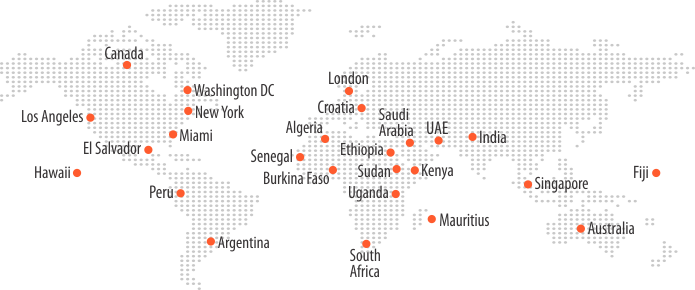Part 2: Machine Intelligence and the Allies of 5G in the Connected World

Part 1 – 5G: The Final Frontier Of The Connected World of the blog series talked extensively about 5G, providing an in-depth analysis of 5G – we know about the 5G network and the pros and cons. The critical question is how its architecture enables the speed of delivery, low latency, capacity, and numerous other benefits. Significantly how connected applications can benefit from it, whom all will want to adopt the 5g network, and why! The detailed analysis also clarifies who will not opt for the 5G network as a service.
Telecommunication + Simulated Intelligence = Algorithm-driven Network Designing
Moving on from one technology to the next depends on speed, delivery, security, cost-effectiveness, and willingness to accept changes. A couple of changes part of the scope of the reimagined Telecoms include 5 factors:
- 5G network
- IoT
- The Cloud and the Edge
- Artificial Intelligence (AI) and Machine Learning (ML)
- Virtual Reality (VR) and Augmented Reality (AR)
Let us understand the importance of these factors in re-envisioning telecom network:
5G network: Creating Avenues for Growth
5G has managed to garner a lot of attention, curiosity, and hype since its inception. Though 5G as a technology has enormous potential, it is essential to know that most industries have only recently begun adopting the technology. With an impeccable list of characteristics, the 5G network will be able to handle several thousand new applications (both consumer and industrial) at its peak. 5G’s next-generation network architecture supports the move towards the future of the networks, which has advanced beyond 4G LTE (long-term evolution) while the connected world demands multiple generations of networks to co-exist. The acceptance of co-existing helps a previous network phase-out. In contrast, a new network establishes itself through specific changes in devices that need to upgrade for a network to work efficiently. Let’s talk about what’s next and understand how the next phase will help telecom move on to a faster, more efficient, secure future.
The applications on today’s network present the multi-faceted needs of the new-age consumers. The design considerations thus for the network architecture supporting highly demanding applications tend to be complex—no one-size-fits-all. So, the range of applications requires different types of data to travel distances, large data volumes, or some combination. So 5G architecture must support all of the bands in the 5G spectrum – from licensed, shared, and private sources, including 5G base station design demands over twice the amount of power of a 4G base station- to justify the capabilities of the 5G network.
IoT, the Cloud, and the Edge: The Triad of Connected Intelligence
IoT: Through Machine Learning and 5G, the Internet of Things has evolved from being only connected to technology to an expedition to understand the benefits of 5G and AI to connect everything brilliantly. This transformational evolution, or “true digital revolution,” always produces positive results. The IoTs move into another dimension away from being categorized as just “connected” devices and utilizing the modification capacity to enhance intelligence.
The projection for connected IoT devices is to be 30.9 Bn by 2025, but as of 2022, the numbers have fallen to 27.1bn. So, the question remains, “What changed?”
The Cloud and the Edge: Having the capability to connect to networks that enable data exchange and generation is essential for intelligent edge devices, such as the Internet or a decentralized internal network. Intelligence is subjective, but smart edge devices are technical marvels- equipped with processing chips that provide internal computing resources.
Intelligent Edge Supporting the Paradigm Shift in IoT:
Latency in architecture has constantly challenged organizations dealing with IoT, while Edge computing drives value in IoT deployments by continuing to create data-driven and low-latency architecture.
Typically, edge computing involves moving to compute resources and data closer to the deployment site of the IoT devices, reducing response times and increasing bandwidth. The true power of edge computing lies in the fact that the process brings in intelligence, insights, and accuracy of the locations of IoT deployment in the network’s ecosystem.
Intelligence and decision-to-action latency is crucial for the expected value proposition by bringing intelligence closer to the edge, where the emerging architecture for the IoT can be more effective. The further the IoT devices are from the derived intelligence, the less complex it is. The complexity of the device layer and low latency would have to be closer to the device layer in several sense-and-respond IoT implementations.
Edge computing seems closer to the cloud than IoT devices, whereas the edge has no set definition on how close to the endpoints edge computing needs to be still considered an edge. The edge’s goal becomes attaining close physical proximity to remote sensors or local data centers. Thus, the need to define the “edge” brings the telecommunications companies into the picture, increases the usage of their infrastructure, and uses their expansive reach, putting the edge physically close to all potential customers. Telcos can offer the edge computing infrastructure and supporting components, such as Secure Access Service Edge, for security needed in wide-area networks.
AI and ML: Leading Machine Brilliance
Artificial Intelligence: In AI, computers result in a machine-simulated intelligence process mimicking characteristic traits of human cognizance. A program with AI uses algorithms to provide method-by-method instructions for sorting and understanding data based on three core cognitive processes:
- Learning by using accumulated data and creating rules to sort it.
- Reasoning and using the logic for the proper data categorization.
- Auto-Correction calibrates the data sorting to achieve accuracy while considering the tiny details and combinations to achieve accurate results.
Relevance of AI: Adopting 5G networks present many challenges, and one of the ways the industry resolves those challenges is by integrating artificial intelligence into networks. Artificial Intelligence integration aims to reduce capital expenditures, increase network performance, and build new revenue streams.
AI integration into 5G networks comes with many challenges, such as data collected by AI must be organized, structured, and analyzed effectively. Thus, as 5G networks become more connected, the early AI adopters who can work around these challenges will emerge as the clear frontrunners. A system focusing primarily on network management and scheduling will be less significant than an approach focusing on AI. A strategy focusing on network management and scheduling will be less important than a system focusing on AI.
Potential of AI:
- Enabling edge computing for 5G networks: “Edge computing” ensures the world is moving in the right direction to benefit from artificial intelligence. Data is processed close to the user’s device using a data server. Artificial Intelligence can now be fully utilized even on smaller devices without much computing power. The device and the server must have fast data transfers for edge computing which is possible due to 5G networks’ high bandwidth and low latency, leading to edge computing development. Therefore, 5G positively impacts the delivery of AI-based solutions to users, improving the customer experience because these solutions are more efficient and personalized. Using different types of machine learning, including deep learning techniques, every 5G device, sensor, and the machine will create data points that AI algorithms can analyze and learn.
- Boosting wireless networks using AI: With an increase in the usage of 5G, the challenges in network performance management can’t be avoided. The existing spectrum is insufficient to meet the newfound demand for 5G network coverage. Avoiding network congestion requires thoughtful planning for performance optimization.
Machine Learning: Machine learning (ML) can create algorithms and statistical models to train machines to rely on patterns – models based on sample data to perform a specific task without explicit instructions, depending on patterns and inference. The brilliance of a machine trained by just a set of data algorithms to be able to make predictions or take decisions without being explicitly programmed.
One of the Machine Learning subsets called Deep learning uses algorithms to train and cover every aspect of a data interpretation to act like a human brain- and surprisingly enough, it looks like a neural network.
Relevance of ML:
ML and AI are the catalysts in creating a predictive and proactive network that is functional and effective. Using data to deal with perfecting delivery improves network applications’ efficiency, latency, and reliability.
Potential of ML:
- Enhanced mobile broadband (eMBB) allows new applications with higher data rates across a wide coverage area to provide the required capacity to support peak data rates for many users in a contained coverage space and end-users constantly on the move.
- Massive Machine-Type Communications (mMTC)An essential characteristic of the success of a telecom network is scalability. The secret is to be consistent while delivering efficient transmission of small amounts of data over extended coverage areas for a considerable amount of time. mMTC is built for unforeseen modified usage of devices capable of recording/ streaming data- in a time loop.
- Ultra-Reliable Low-Latency Communications (URLLC) is a subset of the 5G network architecture, used for efficient scheduling of data transfers, achieving shorter transmissions through a larger subcarrier, and managing to schedule overlapping transmissions.
AI and ML in the 5G Enabled Connected World:
AI enables a fully operative and efficient 5G network creating and managing multiple IoT devices connected and efficiently processing insatiable amounts of data. While ML and AI can help network providers an added advantage of offering:
- High automation leads to getting rid of repetitive & time-consuming manual work.
- Traffic management across access networks.
- Smooth bandwidth allocation.
- Fraud detection/ prevention.
- Virtual customer support/ Assistance.
- Dynamic network slicing.
- Adding more value & bringing in more revenue.
- Predictive maintenance of infrastructure
Market Considerations for the Way Forward:
The 5G chipset market is supposed to register a CAGR of 21.8% size, valued at $13.26 bn in 2020 and projected to reach $92.05 bn by 2030.
Report By Acumen Research And Consulting published the forecast for 2022-2030 that the global private 5G network market is estimated to grow a CAGR above 42.4% to reach a market value of around $31,589mn by 2030.
Machine intelligence has redefined itself by taking advantage of the snippets from the listed and many unlisted pros and cons of the 5G network. With all this technology floating around us, accessible, scalable, and modulable to fit our needs empowers industries to become better, faster, and more efficient. It may feel like we are moving forward at an incredible pace. But technology is as such that trusting innovation and taking a chance at something yet to happen- mostly turning theoretical knowledge into reality is unsettling at first. Still, it is also the most rewarding experience that we as curious species look forward to while finding inspiration for the next best thing to come.
R.S. Amblee once said, “Technological evolution is the result of our desire to lead a better life.” And that’s how human ambition finds solutions that we don’t even need right away- we have the ability to continue thinking about how existing technology can become better. The power of predicting what will make life better results in the delivery of these innovative technical marvels wrapped in human brilliance or rightfully termed “Gifts of the Future.”
To explore what’s next-in-line, please stay tuned for Part 3 of this blog series which will be published soon.






